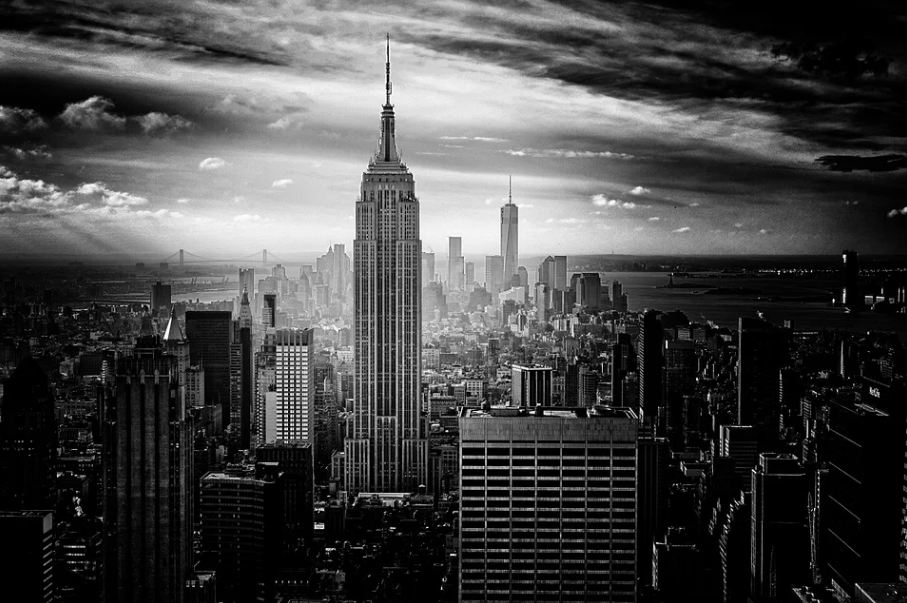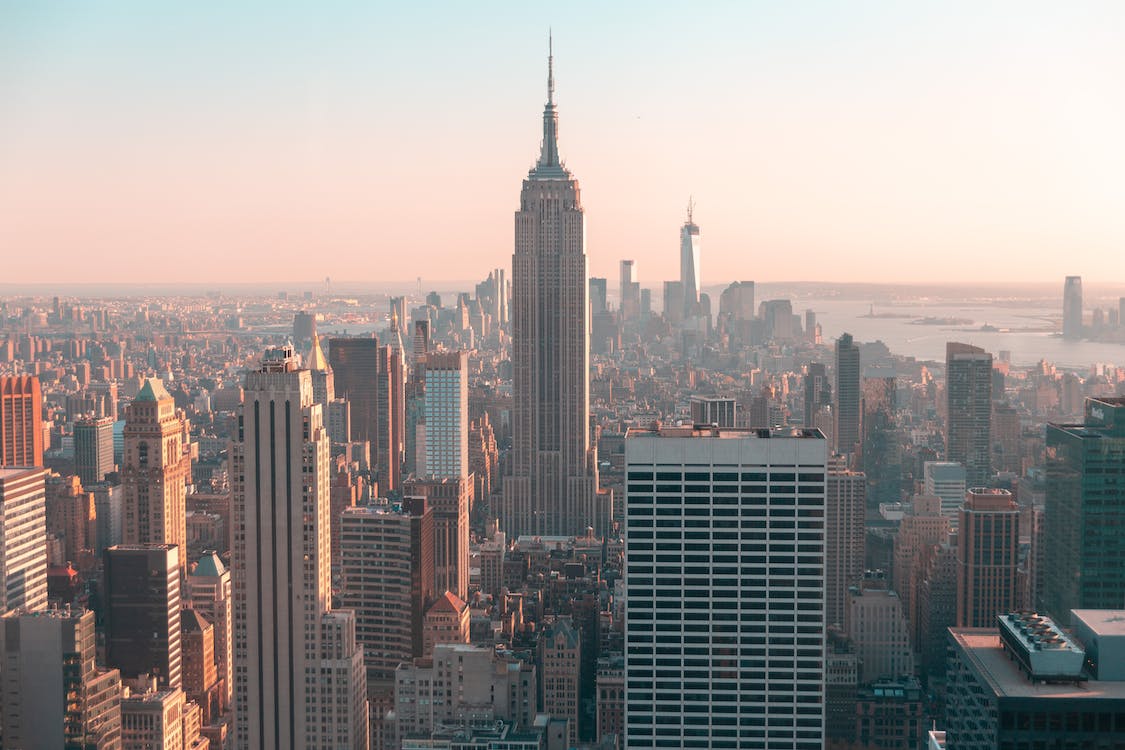Whether you are a local in New York City or a tourist, you simply cannot ignore the looming structure that is the Empire State Building. While today the building no longer has the status of the tallest building in New York, let alone in the world, it still occupies a position of historical importance. It is one of the most important landmarks of New York that continue to draw people from all around the world.
The Empire State Building is located on Fifth Avenue, Manhattan, in what is the heart of NYC. Locals and tourists alike flock to the 86th and 102nd-floor observatories of the building to have a bird’s eye view of five states: New York, New Jersey, Massachusetts, Connecticut, and Pennsylvania. It stands at the height of 1,250 feet, which totals to 1,454 feet when you include the antenna.
The building has a zip code of its own and has over 2.8 million square feet of rentable space. The Empire State Building has been designated as one of the Seven Wonders of the Modern World by the American Society of Civil Engineers and is also a National Historic Landmark.
In light of the above facts, it is no surprise why people visit the Empire State Building so often. In fact, an estimated 4 million tourists make it to the building’s observatories yearly. Though the Empire State Building is celebrated and recognized globally, it takes familiarity with its history for individuals to truly appreciate the brilliance that went into the construction of what was once the tallest building in the world. Let us dive into the history of this marvelous piece of architecture.
History of the Empire State Building
The land where the Empire State Building stands today was the site for Astoria Hotel and the Waldorf Hotel back in 1897. Combined, these hotels had 1300 bedrooms, which made them the largest hotel in the world. After changing a few hands, this land was eventually bought by Empire State Inc., a group of investors including Kaufman, Earle, Raskob, and Pierre and Coleman du Pont. The group, which was presided over by a former New York governor Alfred Smith, also bought adjacent land so they would have enough area to construct the tower’s base.
Empire State Inc. made a contract with William Lamb to create a design for the building. Drawing upon plans his firmhad made for another building, Lamb procured the designs just within two weeks. His partner Shreve created the bug diagrams for the project, and Lamb finally came up with the pencil-like design for the building when he incorporated setbacks following the 1916 Zoning Act.
Learn about what sets The Empire State Building from other Skyscrapers. Visit Reaching for the Sky – The Empire State Building in the Global Tapestry of Skyscrapers.
The Race into the Sky
Empire State Inc. had initially intended the building to be fifty stories long. Then they revised the plan to construct sixty and then eighty stories. While the plans for Empire State Building were being finalized, two other immensely tall buildings were also under construction, 40 Wall Street and the Chrysler Building. Both these buildings hoped to acquire the title of the tallest building in the world, and the media called it the Race into the Sky. In 1929, the Chrysler Building added a steel tip to its roof and reached a height of 1,046 feet, surpassing the height of 40 Wall Street greatly.
To beat the Chrysler Building, five stories were added to the plan for the Empire State Building. This plan also required adding to the width of the building’s site. However, even with the additional five stories, the building would be only 1,050 feet tall, just 4 feet more than the Chrysler Building.
In December of 1929, the building plans were revised for the last time to add a 200-foot metal crown, which had sixteen stories, and a 222-foot dirigible station. The total height was now 1,250 feet, making the building the tallest building in the world by a great stretch even without the antenna.
Construction of the Empire State Building
Construction work on the Empire State Building began on March 17, 1930. This was the time of the Great Depression when the stock markets had crashed. The construction of the building led to the generation of new jobs in New York City.
Mass production of common materials and precise planning of the building plan ensured speed and efficiency in the construction process. Cafes were set up on incomplete floors and water taps installed so that the workers did not waste time descending to the ground floor. Railway tracks ran from the basement to the elevator and were also installed on floors where construction was taking place. This made transportation of materials fairly easy. Building materials were sourced from all corners of the globe, and the order placed for the 57,480 short tons of steel was the largest single order placed for steel in history till that time.
The building broke yet another record when its pace of construction equaled 4 ½ stories per week. On September 19, the steel structure was completed. The work on the exterior walls and the building’s interior had been progressing steadily while the steel structure was being constructed. By the time the steel structure was built up to the 95th floor, the exterior walls had been built up to the 75th floor.
The structure of the Empire State Building was complete on April 11, 1931. That means the construction took just one year and 45 days. The project had involved 3,500 workers at its peak, and there had been times when over 200 trucks were making material deliveries at the construction site daily. According to official reports, five workers died during the construction; however, the New York Daily Newsquoted the figure at fourteen.
The entire project of the Empire State Building cost $40,948,900, which was about $10,000,000 less than the budget allocated for it. The detailed accounts of the building’s construction and the close-up of the workers’ daily lives were artistically documented by the photographer Lewis Hine.
Some Highlights from History

The Empire State Building was declared a landmark by the New York City Landmarks Preservation Commission in 1981 and then recognized as a National Historic Landmark by the National Parks Services in 1986. The building was ranked number 1 on the American Institute of Architects’ list, America’s Favorite Architecture, in 2007.
In 2009, an energy-efficiency retrofit program was announced. The Empire State ReBuilding program was valued at $65 million and involved installing and implementing technologies and practices to help the building become energy efficient. The restoration program eventually made the Empire State Building a global model for retrofitting existing structures. The building earned a LEED Gold certification for its modernization efforts, due in part to the ReBuilding program.
On Valentine’s Day in 1994, the first Valentine Day’s wedding ceremonies took place on the 86th-floor observatory of the Empire State Building, a tradition that continues till today. More than 250 couples have been wedded during the annual event, which is televised globally. Another yearly event that takes place in the building is the ESB Run-Up. Runners from around the world race each other up the 1,500 steps to the 86th-floor.
A Cultural Icon
The Empire State Building has become an American cultural icon. It has been featured in many movies, TV shows, and books. The first movie to depict the building was King Kong in 1933. Many romantic films featured the building, notably Love Affair (1939), An Affair to Remember(1957), and Sleepless in Seattle (1993). The building, built in the times of the Great Depression, was a symbol of hope for Americans. It was the tallest building in the world for forty years after its creation. But even when it lost that title lost its title with the construction of the Twin Towers, it retained its popular appeal.
Conclusion
Located in the heart of New York, the Empire State Building is a popular spot for both tourists and locals. With its 86th and 102nd floor observatories and the expansive views they offer, its state-of-the-art interior, and the preserved ground floor interior, it makes for an unforgettable experience. If you were wondering why you should visit the Empire State Building, perhaps this tour down the history lane has helped you make up your mind.

